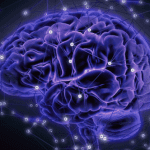 Creepy
Creepy  Creepy
Creepy  Technology
Technology 10 Scientific Breakthroughs of 2025 That’ll Change Everything
 Our World
Our World 10 Ways Icelandic Culture Makes Other Countries Look Boring
 Misconceptions
Misconceptions 10 Common Misconceptions About the Victorian Era
 Mysteries
Mysteries 10 Strange Unexplained Mysteries of 2025
 Miscellaneous
Miscellaneous 10 of History’s Most Bell-Ringing Finishing Moves
 History
History 10 Great Escapes That Ended Right Back in Captivity
 Weird Stuff
Weird Stuff 10 Fascinating Things You Might Not Know About Spiders
 Food
Food 10 Everyday Foods You Didn’t Know Were Invented by the U.S. Military
 History
History 10 Odd Things Colonial Americans Kept at Home
 Creepy
Creepy 10 More Representations of Death from Myth, Legend, and Folktale
 Technology
Technology 10 Scientific Breakthroughs of 2025 That’ll Change Everything
 Our World
Our World 10 Ways Icelandic Culture Makes Other Countries Look Boring
Who's Behind Listverse?

Jamie Frater
Head Editor
Jamie founded Listverse due to an insatiable desire to share fascinating, obscure, and bizarre facts. He has been a guest speaker on numerous national radio and television stations and is a five time published author.
More About Us Misconceptions
Misconceptions 10 Common Misconceptions About the Victorian Era
 Mysteries
Mysteries 10 Strange Unexplained Mysteries of 2025
 Miscellaneous
Miscellaneous 10 of History’s Most Bell-Ringing Finishing Moves
 History
History 10 Great Escapes That Ended Right Back in Captivity
 Weird Stuff
Weird Stuff 10 Fascinating Things You Might Not Know About Spiders
 Food
Food 10 Everyday Foods You Didn’t Know Were Invented by the U.S. Military
 History
History 10 Odd Things Colonial Americans Kept at Home
10 Mysteries of the Human Genome
We come with a blueprint: the human genome. In 2001, researchers started sequencing it. Twenty-one years later, they finished. And yet, mysteries remain. Ninety-eight percent of our DNA is an enigmatic region known as the dark genome. Despite our complexity, we have far fewer genes than some simple organisms. Our Y chromosome is shrinking and possibly headed for extinction.
Our DNA contains traces of ghost lineages, and there is evidence our environment can alter gene expression. The more we learn about the human genome, the more mysteries emerge.
Related: 10 Extremely Rare Beneficial Human Genetic Anomalies
10 Dark Genome
Only 2% of human DNA contains genes that make proteins. The remainder is known as the “dark genome.” Much of this region is composed of repetitive strings, including transposons—DNA elements that can move around. These jumps can cause dramatic evolutionary changes, such as the loss of tails in early humans. Other portions come from ancient endogenous retroviruses that embedded themselves in our genome millions of years ago.
Initially, geneticists labeled this 98% “junk DNA,” assuming it had no function. They were wrong.
The dark genome controls gene expression, determining when and how proteins are produced. It responds to environmental factors such as toxins, stress, exercise, and sleep. According to Samir Ouzain of Haya Therapeutics, “proteins are the hardware, and the dark genome is the software.”
Much of this regulation comes from non-coding RNA—molecules that act like the conductor of the genetic orchestra. If misregulated, the dark genome can overwhelm the immune system, fuel cancer growth, and contribute to diseases like Alzheimer’s, schizophrenia, Crohn’s disease, and psoriasis.[1]
9 G-Value Paradox
Wheat has 124,207 genes; humans have only about 24,200. Yet humans are far more complex. This contradiction is known as the G-value paradox. Sophistication in an organism is not tied to the number of genes but to the diversity of protein families produced by those genes.
A key factor behind the paradox is that only a small fraction of our genome actually produces proteins. David Alvarez-Ponce of the University of Nevada, Reno, compares it to a toolbox. Organisms like wheat have many redundant “tools”—multiple versions of similar genes—while humans possess fewer tools with broader, more specialized uses.
Natural selection may also explain the paradox. In BBA Advances, Subhash Lakhotia writes that natural selection acts like a tinkerer, not an engineer. If a system works—even if it is inefficient—it tends to persist. Thus, organisms may evolve sprawling, inelegant genomic toolkits simply because they function well enough to pass on to the next generation.[2]
8 Y Chromosome Weirdness
The Y chromosome is one of the strangest stretches of human DNA. For decades, scientists dismissed it as a genetic desert, a chromosome that merely “made males” and little else. Yet the Y hides many surprising behaviors. Unlike other chromosomes, it does not recombine with a partner during fertilization. Instead, it recombines with itself using palindromic sequences—almost like genetic self-repair.
This “incestuous” exchange can fix mutations, but it can also accidentally delete important genes, contributing to infertility.
Over roughly 150 million years, the Y chromosome has lost about 95% of its ancestral genes. Geneticist Jennifer Graves has proposed that the human Y chromosome may eventually disappear entirely. Several mammals—the creeping vole and certain Japanese spiny rats—have already evolved alternative sex-determination systems after losing their Y.
But critics argue that gene loss on the Y has stabilized and may have reached equilibrium. Whether the chromosome is doomed or simply quirky remains one of genetics’ great unanswered questions.[3]
7 Human Accelerated Regions
For millions of years, much of mammalian DNA remained stable. But around six million years ago—when humans diverged from chimpanzees—certain regions changed rapidly. These are known as Human Accelerated Regions, or HARs. They modify the function of existing genes rather than adding new ones. Many HARs are linked to brain growth and organization.
Geneticists identify HARs by comparing the human genome to that of our closest relatives. Notable examples include FOXP2, associated with speech and fine motor control; AUTS2, correlated with autism; and NPAS3, connected to schizophrenia. These regions often influence brain cell development or neural wiring.
Researchers at UC San Diego discovered one especially intriguing site: HAR123. It is not a gene but a regulatory “volume control” that adjusts the activation of nearby genes. HAR123 appears to promote cognitive flexibility—our uniquely human ability to unlearn outdated information and adapt to new circumstances.[4]
6 Ghost Lineages
Human DNA contains remnants of extinct human species like Neanderthals and Denisovans—but also hints of mysterious “ghost lineages” with no known fossils. In 2020, Science Advances reported that West African genomes contained DNA from an unknown archaic population. This interbreeding likely occurred around 50,000 years ago, similar to the timeline of Neanderthal interbreeding elsewhere in the world.
If these ghost genes remain today, they likely provided a survival advantage. Yet we still don’t know whether they came from a single ancient species or multiple lost groups.
In May 2025, researchers in China’s Yunnan province made another discovery. While analyzing the DNA of a 7,100-year-old skeleton, they found markers from a previously unknown human branch. This group, dubbed the Basal Asian Xingyi lineage, diverged from other humans around 40,000 years ago.
These ghostlike ancestors suggest that human evolution was far more tangled than once believed.[5]
5 De Novo Genes
Some genes don’t descend from earlier genes at all—they emerge from “junk DNA.” These are known as de novo genes. Many are active in the testes and the cerebral cortex, suggesting roles in reproduction and advanced cognition. Geneticists believe such genes help organisms rapidly adapt to new pressures.
De novo genes often appear during stress, infection, or immune activation. Since sexual selection drives rapid evolution in male reproductive organs, it is not surprising that many human de novo genes originate there.
But novel genes are a double-edged sword. While they may help define human-specific traits, they can also introduce vulnerabilities. Several de novo genes contribute to tumor growth, schizophrenia, autism, and other neurological disorders.
Because these genes have no ancestral versions—not even in chimpanzees—they remain some of the most perplexing additions to our genome.[6]
4 Unique Duplicates
Occasionally, the human genome duplicates entire genes. This creates an original copy to perform its usual role and a spare copy free to evolve new functions. These unique duplicates produce species-specific traits—but they also make us susceptible to certain diseases.
In 2007, James Sikela of the University of Colorado examined 20,000 genes and identified several important duplicates. One example is AQP7, essential for transporting water and sugars into cells. Chimps have two copies of this gene; humans have five. Sikela suggests that these extra copies may have boosted early humans’ endurance on long, hot journeys across the savannah.
Gene duplication can also be dangerous. Having three copies of the SNCA gene increases the risk of Parkinson’s disease. Duplications in PMP22 cause Charcot–Marie–Tooth disease, and human-specific genes like SRGAP2 and Notch2NL both expanded our brainpower and raised the risk of neurodevelopmental disorders.
Evolution giveth—and evolution taketh away.[7]
3 The Unknome
Geneticists still don’t know what about 20% of our genes do. To map these mysteries, researchers Matthew Freeman and Sean Munro created the “unknome,” a database ranking genes by their “knowness” scores. Thousands score near zero, meaning we know almost nothing about their function, structure, or distribution.
To test the system, researchers studied 260 low-knownness genes shared between fruit flies and humans. A quarter of these genes proved essential—knocking them out caused death or severe developmental issues. Others affected fertility, locomotion, stress response, and even wing formation in flies.
The Unknome database is open, customizable, and designed to steer research toward neglected genetic regions. And while the number of mysterious genes has dropped since the early 2000s, Munro notes that “there are still a couple thousand genes in the human genome, at least, for which essentially nothing is known.”[8]
2 Lost DNA
Humans have lost thousands of genes over the course of evolution. Many became pseudogenes—broken versions of once-functional genes. Despite being inactive, these lost genes often regulate active ones and help define species-specific traits.
Nearly 10,000 genes common to all other mammals are missing in humans. Many are related to sensory perception, metabolism, and brain function. Their absence suggests they offered a survival advantage to early humans.
These genomic losses shaped modern humans in quirky ways. We cannot produce vitamin C due to a broken GULO gene. The loss of olfactory receptor genes dulled our sense of smell. The disappearance of the muscle gene MYH16 contributed to changes in jaw shape—and possibly allowed room for a larger brain.
According to Yale’s Steven Reilly, “deleting genetic code can result in profound consequences for traits that make us unique as a species.”[9]
1 Epigenetic Changes
Sometimes gene expression changes without altering the underlying DNA. This phenomenon is known as epigenetic modification. It results from environmental factors like diet, exercise, stress, lifestyle, and exposure to toxins.
Epigenetic mechanisms include histone modification, which affects how tightly DNA is packaged, and DNA methylation, which tends to silence genes. These processes influence when, where, and how much protein a gene produces. Because the DNA sequence itself is unchanged, epigenetic alterations are reversible—at least in theory.
Some scientists believe epigenetic changes can be passed to offspring. A dramatic example comes from the Dutch Hunger Winter of 1944–45. Children born during the famine showed higher rates of heart disease, schizophrenia, and type 2 diabetes decades later. Their bodies appeared “reprogrammed” to store fat more efficiently due to prenatal starvation.
If environmental stress can alter gene expression across generations, trauma and PTSD may have intergenerational consequences that echo far beyond a single lifetime.[10]








